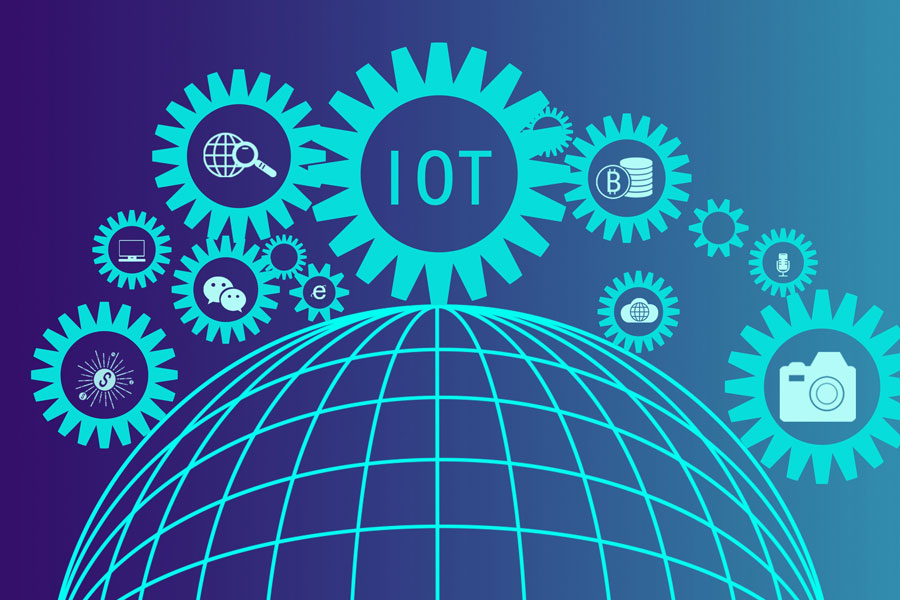What kind of IoT devices are more likely to succeed, and what are the key considerations for IoT devices? Today I will give you an inventory of 5 key considerations for IoT devices.

Form Factor
The various form factors of potential IoT devices have an impact on many aspects, including IoT testing. Although some devices (such as connected vehicles) are far larger than traditional wireless devices such as smartphones, tablets, and laptops, many IoT applications require small sensors. For example, wearable devices usually provide smaller devices without much space for antennas and chipsets.
Power Consumption
Although smart phones and tablets are usually charged once a day, IoT devices may not have a readily available power source and often require years of battery replacement. A device’s software or firmware update may drain its battery, and the amount of communication between the device and the cloud has a direct impact on battery life. If the network is shut down, will the device continue to poll the network? If this is the case, it will drain the battery. These are things that must be considered. It can be said that one of the biggest challenges of IoT devices is power consumption.
RF Design
RF design is also related to form factor and power consumption, and it has a special impact in a very small form factor. IoT devices may need to be encapsulated in a plastic case to ensure the robustness of the external environment, which may be a challenge for RF propagation. In addition, these devices tend to be grouped with other devices, so it is necessary to consider the coexistence and the degree of immunity of the devices to interference from other devices, and how effective they are to become good citizens in the network, without sending out false signals.
Safety
Recently distributed denial of service attacks oriented towards IoT devices have led to the destruction of many popular websites and prompted the recall of some webcams and digital video recorders. At present, the security of the Internet of Things has become the primary consideration. Although traditional computing assets may be located on-site, now IoT devices will be located remotely, but they can still access the enterprise or operator’s network-or connect to a car or home security system. In addition, if problems are found, low-power, low-data-rate IoT devices may be difficult to patch wirelessly, so the built-in security must be strong. The security of IoT devices is undoubtedly a major technical challenge for the industry, and it is related to the success or failure of the development of the IoT industry.
Business Case
The precautions in the Internet of Things not only mean technical and security challenges, but also how and why companies should use connectivity and what they hope to achieve to achieve a return on investment. The value of IoT is expected to come from the intelligence that can be extracted from the data generated by IoT devices-it may take some time for vertical industries to digest wireless technology at the correct speed.
Most companies in the Internet of Things are not actually hardware companies-the real value of the Internet of Things lies in monetizing intelligence and decision-making based on the information provided by these devices, but companies still need to use hardware. Many vertical specific IoT applications are still being explored in terms of regulatory requirements and best practices. The business model is essential for obtaining industry value and creating value. But there must be a strong technical foundation to truly do this.
Please keep the source of this article for reprinting:5 Key Considerations For IoT Devices
Reprint Statement: If there are no special instructions, all articles on this site are original. Please indicate the source for reprinting:https://www.cncmachiningptj.com/,thanks!
 3, 4 and 5-axis precision CNC machining services for aluminum machining, beryllium, carbon steel, magnesium, titanium machining, Inconel, platinum, superalloy, acetal, polycarbonate, fiberglass, graphite and wood. Capable of machining parts up to 98 in. turning dia. and +/-0.001 in. straightness tolerance. Processes include milling, turning, drilling, boring, threading, tapping, forming, knurling, counterboring, countersinking, reaming and laser cutting. Secondary services such as assembly, centerless grinding, heat treating, plating and welding. Prototype and low to high volume production offered with maximum 50,000 units. Suitable for fluid power, pneumatics, hydraulics and valve applications. Serves the aerospace, aircraft, military, medical and defense industries.PTJ will strategize with you to provide the most cost-effective services to help you reach your target,Welcome to Contact us ( [email protected] ) directly for your new project.
3, 4 and 5-axis precision CNC machining services for aluminum machining, beryllium, carbon steel, magnesium, titanium machining, Inconel, platinum, superalloy, acetal, polycarbonate, fiberglass, graphite and wood. Capable of machining parts up to 98 in. turning dia. and +/-0.001 in. straightness tolerance. Processes include milling, turning, drilling, boring, threading, tapping, forming, knurling, counterboring, countersinking, reaming and laser cutting. Secondary services such as assembly, centerless grinding, heat treating, plating and welding. Prototype and low to high volume production offered with maximum 50,000 units. Suitable for fluid power, pneumatics, hydraulics and valve applications. Serves the aerospace, aircraft, military, medical and defense industries.PTJ will strategize with you to provide the most cost-effective services to help you reach your target,Welcome to Contact us ( [email protected] ) directly for your new project.
Link to this article:5 Key Considerations For IoT Devices
Reprint Statement: If there are no special instructions, all articles on this site are original. Please indicate the source for reprinting.:ODM Wiki,thanks!^^